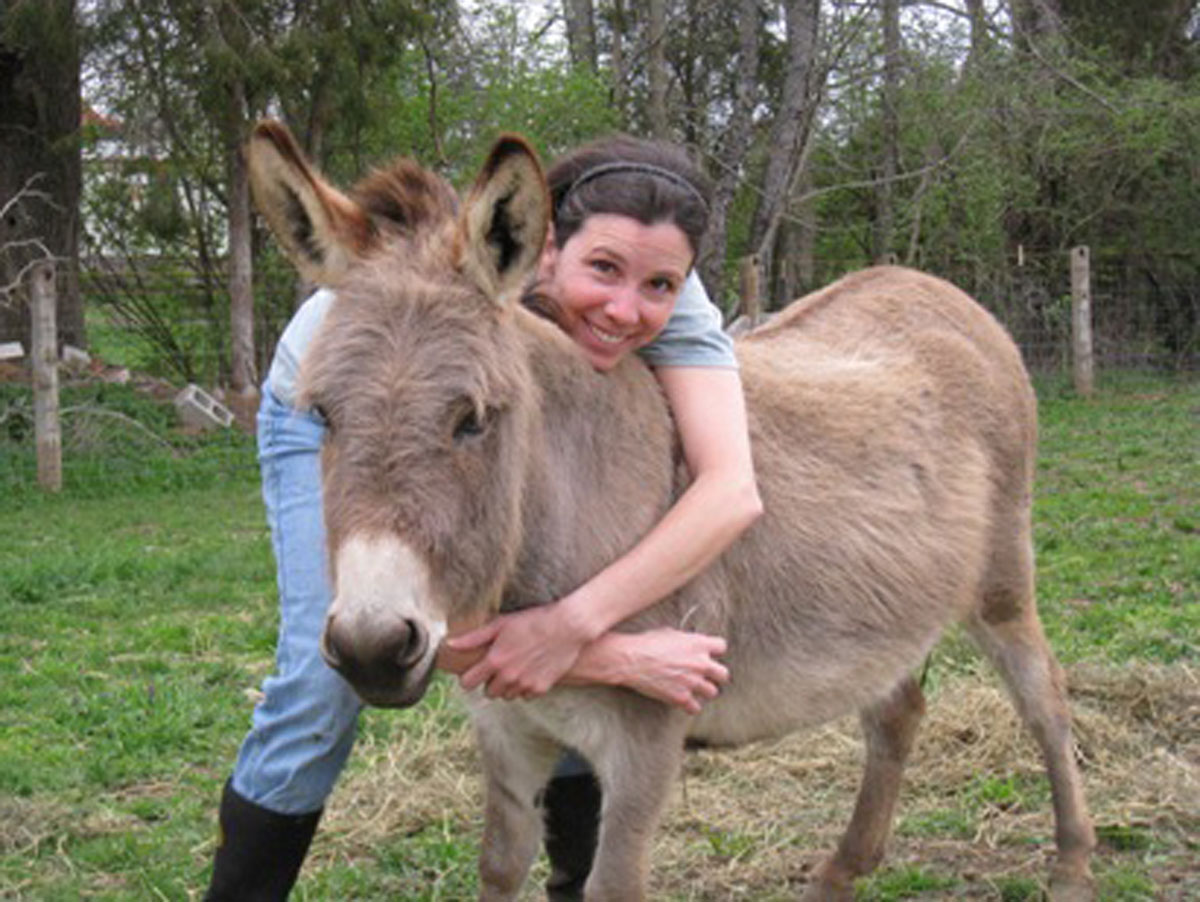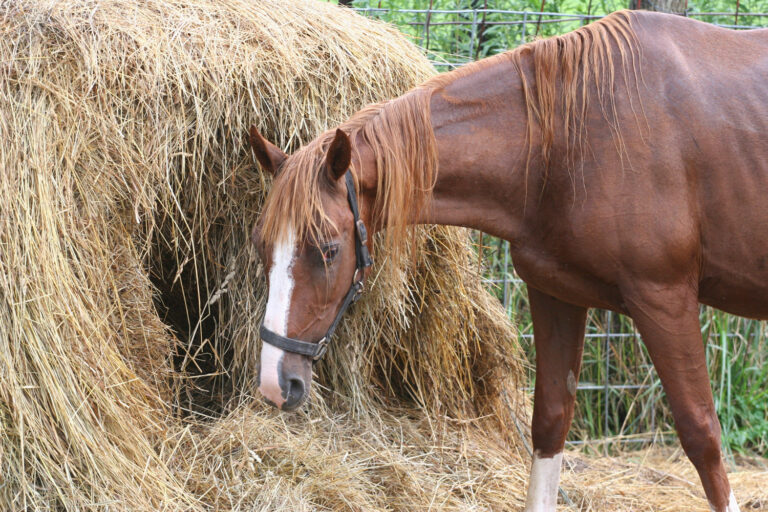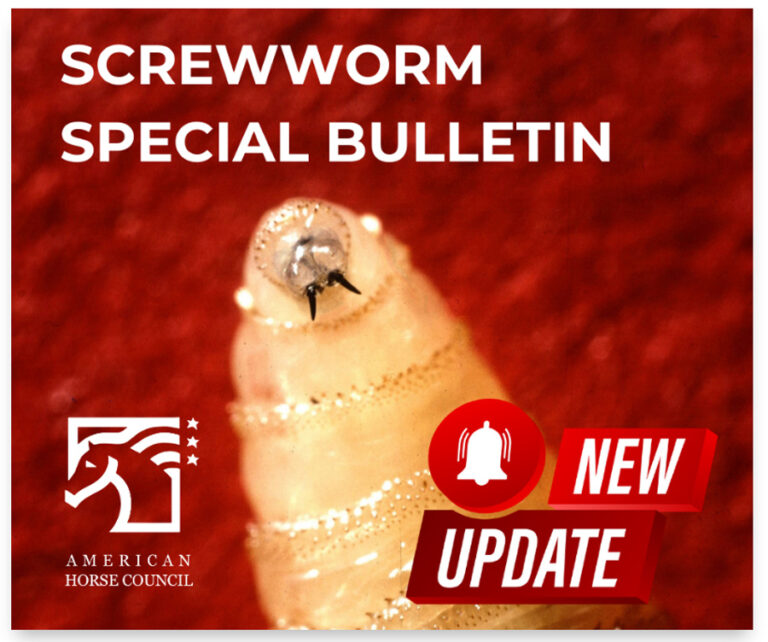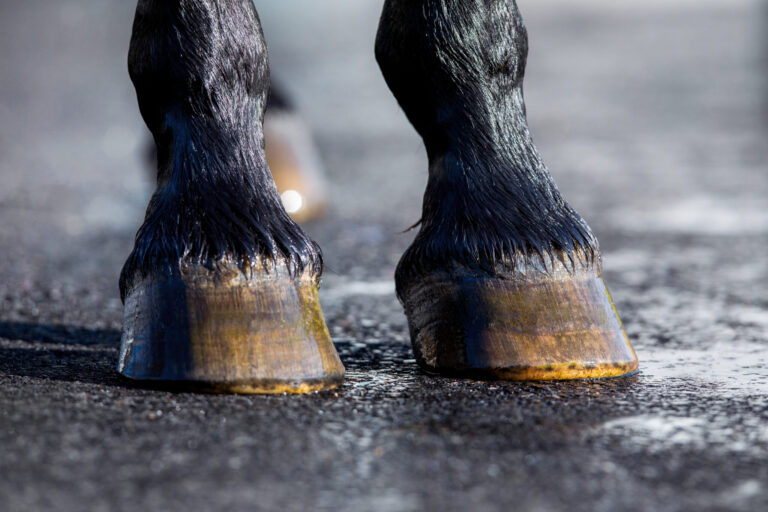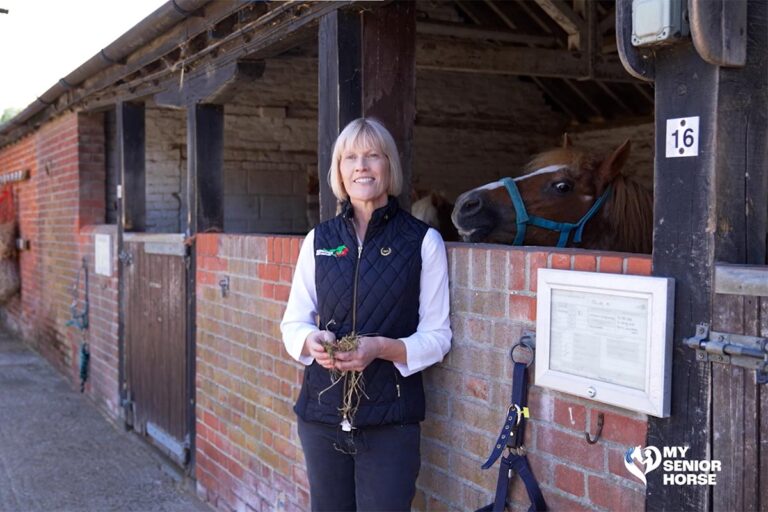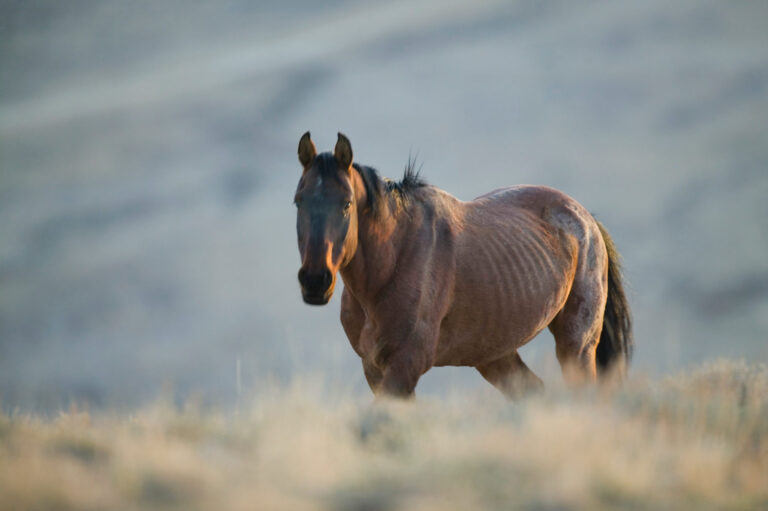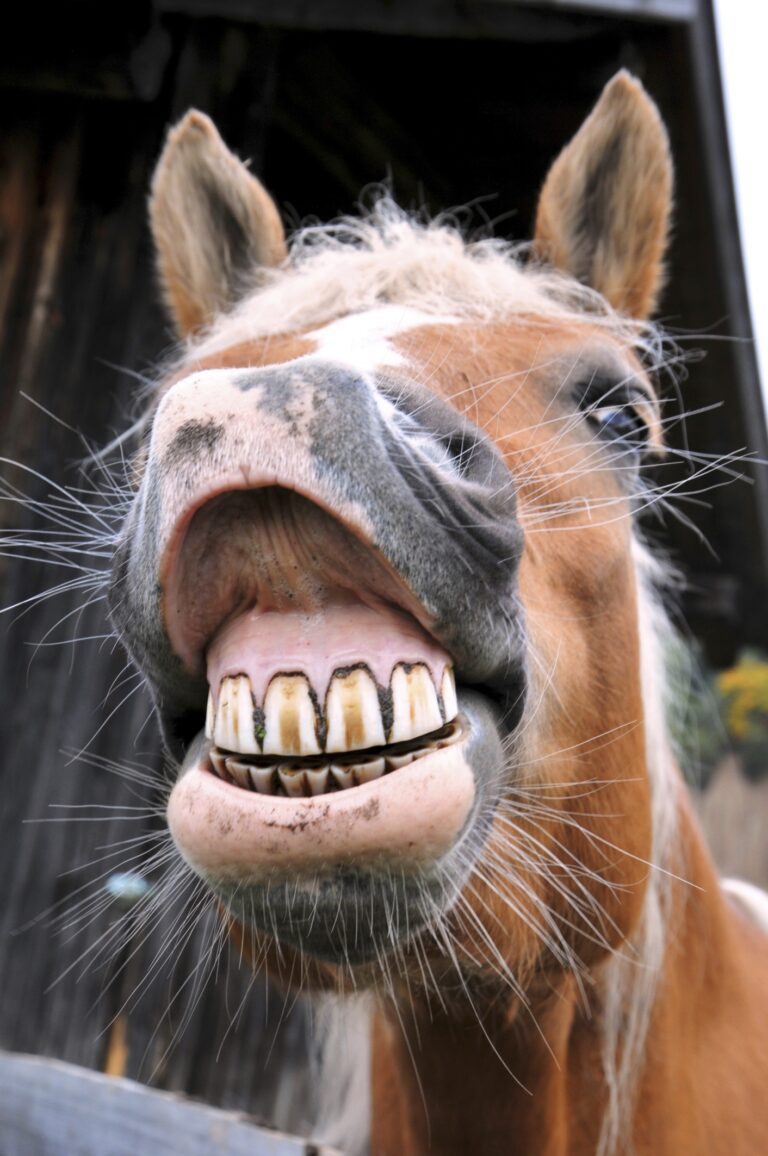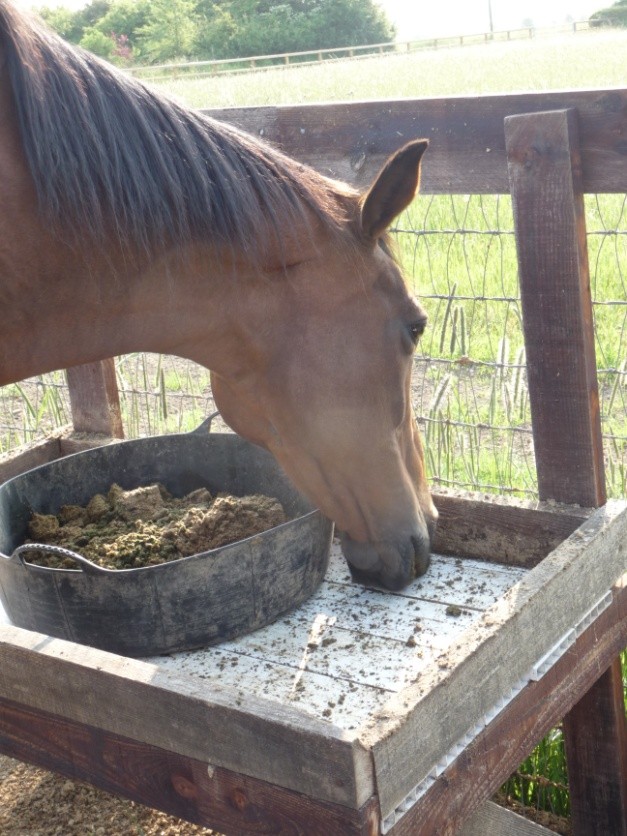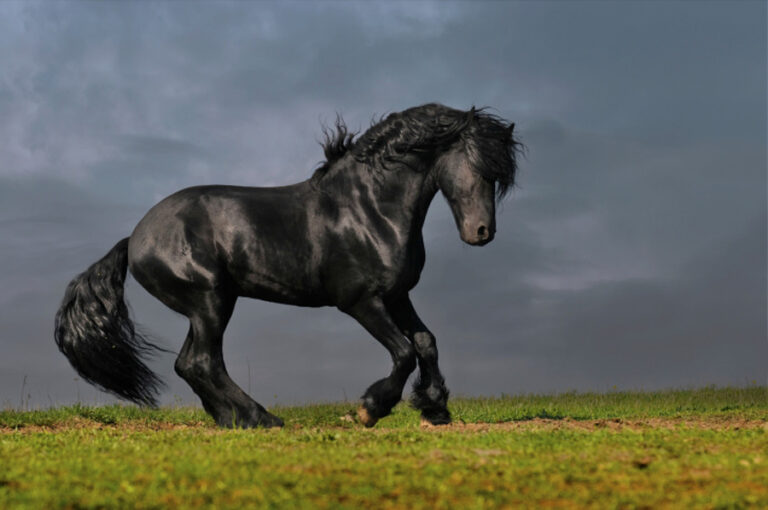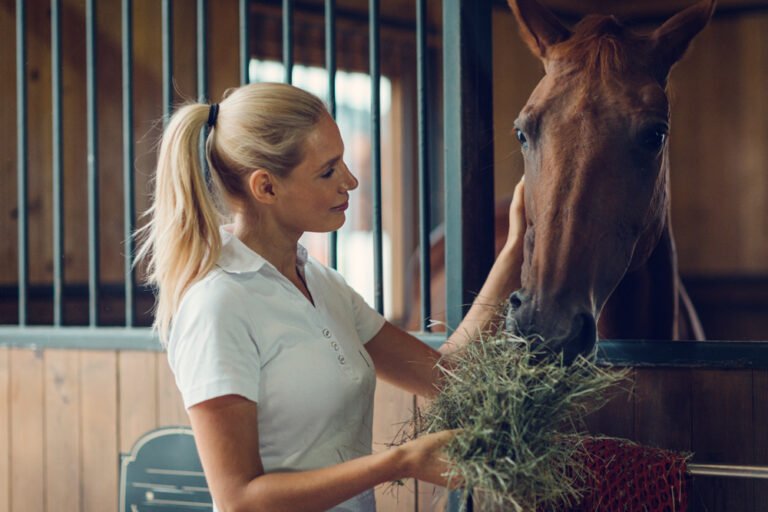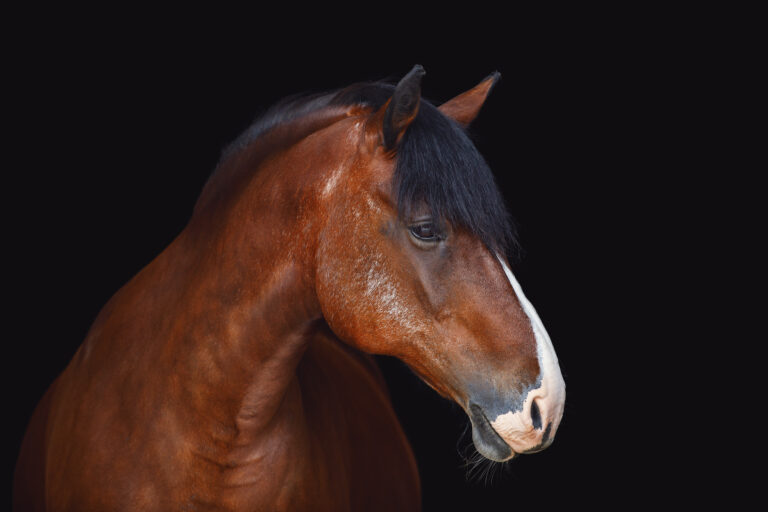Horses might need to have their feed intake restricted for a variety of physical reasons. It might be to help them lose weight and/or manage conditions such as laminitis, insulin dysregulation, or equine metabolic syndrome (EMS). Veterinarians and owners might approach this task in a number of ways. Here are some options:
- Reducing grazing time and increasing time spent stabled;
- Reducing the amount of supplementary forage given (e.g., hay);
- Grazing small, bare paddocks (often called ‘starvation’ paddocks or dry lots); or
- Using a grazing muzzle.
Over recent years, there has been increasing recognition amongst vets, welfare scientists, and owners that feed restrictions can significantly compromise the horse’s wellbeing and natural patterns of behavior. Under natural conditions, where horses have free choice, they:
- Spend 13-18 hours a day grazing and browsing on a variety of shrubs and trees;
- Have the company of familiar, compatible horses all the time; and
- Walk long distances each day.
The 3 Fs of Equine Behavioral Needs
Through evolution, horses have become hardwired to perform these behaviors. Canadian behaviorist Lauren Fraser summarized these as the need for friends, forage, and freedom. When we restrict our horses’ feed intake, we might restrict these needs to a greater extent than the horse can cope with.
What could this look like in a farm setting?
Reducing access to grass by stabling often restricts a horse’s ability to move freely and socially interact with other horses. That can lead to feelings of anxiety, loneliness, boredom, and frustration.
Restricting the amount of hay a horse is given can mean they spend a lot of time with no food. That can cause hunger, frustration, boredom, and gastric discomfort.
Turning a horse out in a small, restricted-grazing paddock often restricts their movement. By moving less, horses burn fewer calories. That makes weight loss more difficult.
If a horse is turned out with other horses and feed/grazing is limited, it can increase competition for the available food. That can cause aggressive interactions and possibly increase the likelihood of injury (for horses and people). If the individual is the only horse on restricted grazing, it can lead to feelings of loneliness and anxiety.
Behaviors You Might See
A horse might struggle to cope with feed restrictions because behavioral needs are not being adequately met. This can affect their own behavior. You might see the horse:
- Defend access to forage in the field and be aggressive toward other horses;
- Be difficult to handle (e.g., by pulling toward grass or hedges when they are led);
- Be difficult to catch (e.g., because catching predicts food restriction);
- Spend a lot of time standing still or pacing rather than being engaged in feed intake behaviors;
- Be generally grumpy; and/or
- Be less interested in life.
Consider Mitigations for Restricting Feed
For many horses, feed restriction is important to prevent obesity and related conditions. For successful, long-term feed restriction, it is important to find ways to restrict feed whilst minimizing compromise to the horse’s behavioral needs.
All horses are individuals. Some might cope better with one way of restricting feed intake than another. You might have to use some trial and error to find an approach that works for your horse.
Try to meet the horse’s need for friends, forage, and freedom. Think about the following:
- You can change the forage given so that a greater quantity can be fed. Feeding soaked hay or using oat or barley straw are some examples.
- Make diet changes gradually. Straw should not make up more than 50% of the forage in the diet. (More detailed nutritional advice is available in the Further Reading below).
- You can increase opportunities for free movement, such as by turning out in a restricted grazing paddock or on a track.
- Appropriate selection of companions is important. Track systems and paddocks should be designed to prevent areas that horses can become trapped or bullied.
- Make the environment more stimulating and complex by providing enrichment activities (see “Tips” section below).
- Provide opportunities for the horse to interact with familiar, compatible horses. This could include turning out horses with similar dietary needs. It also can be as simple as tying a companion up outside their stable for a period of time each day or housing a buddy next door to give the restricted horse an opportunity for essential social contact.
(Author’s note: More tips and support can be found by joining online communities of owners in the same position such as the Spillers Slimmers Club.)
Tips for Enriching the Environment
Managing a horse whose feed intake needs to be restricted can be challenging and emotionally draining. If you have a horse that is struggling to cope with feed restriction, a qualified behaviorist can work with you and your vet to help you find a solution that will meet your horse’s physical and psychological needs.
What can owners do for horses with restricted feed intake to enrich their environments?
Think about using treat balls and stable toys. Low-calorie treats or hay can be hidden or attached to all kinds of things. Old wellington boots with holes cut in them can be stuffed with hay, making an unusual slow feeder. In small amounts, carrots or turnips can be hung from twine as a ‘kebab’ your horse can nibble on. You will need to watch your horse to ensure he doesn’t become overly frustrated.
Here are some other tips on enrichments:
- Give and remove toys regularly to retain some novelty value.
- Increase your interaction with the horse by grooming or being tactile.
- Divide the daily ration of hay as much as possible by using double hay nets or small-holed nets.
- Some horses enjoy mirrors and music, but this can vary between individuals.
- Paddocks can be enriched by providing a variety of plants for foraging and access to hedgerows (check for any poisonous plants).
Equine Behaviorists
If you would like to connect to a specially trained equine behaviorist, check out these links:
- Certificated Clinical Animal Behaviourists (CCAB) in the U.K.
- Association of Pet Behaviour Counsellors (APBC) in the U.K.
- International Association of Animal Behavior Consultants
- American College of Veterinary Behaviorists
Further Content
- Feeding Horses and Ponies Prone to Laminitis, Part 1. Sarah Nelson. MySeniorHorse.com
- Feeding Horses and Ponies Prone to Laminitis, Part 2. Sarah Nelson. MySeniorHorse.com
- My Senior Horse Video: Overweight Horse Management. Bryan Cassill. MySeniorHorse.com
- A Guide to Equine Body Condition Scoring. Sarah Nelson. MySeniorHorse.com
- How to Feed Your Overweight Horse Video. Bryan Cassill. MySeniorHorse.com
- The Horse Trust ‘Weight to Win’.

